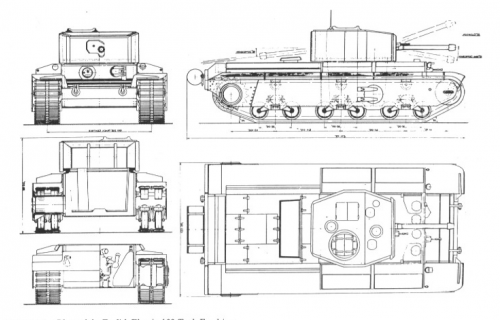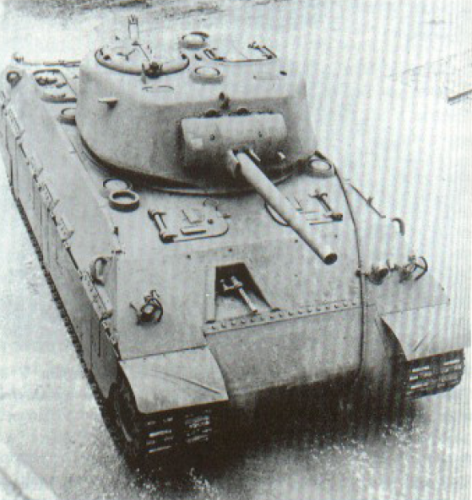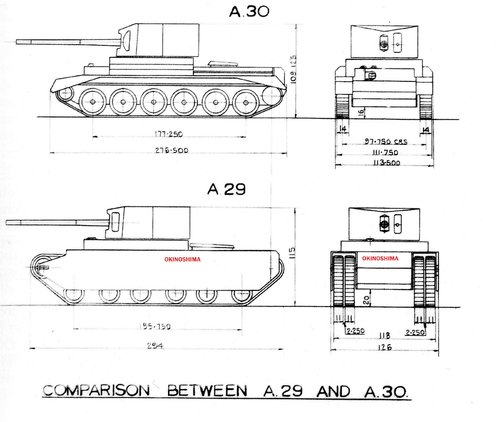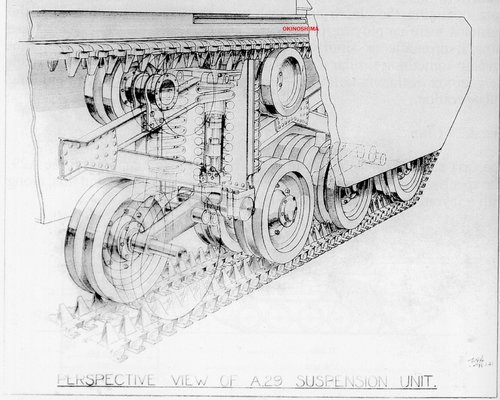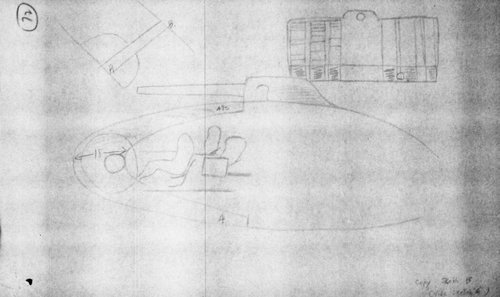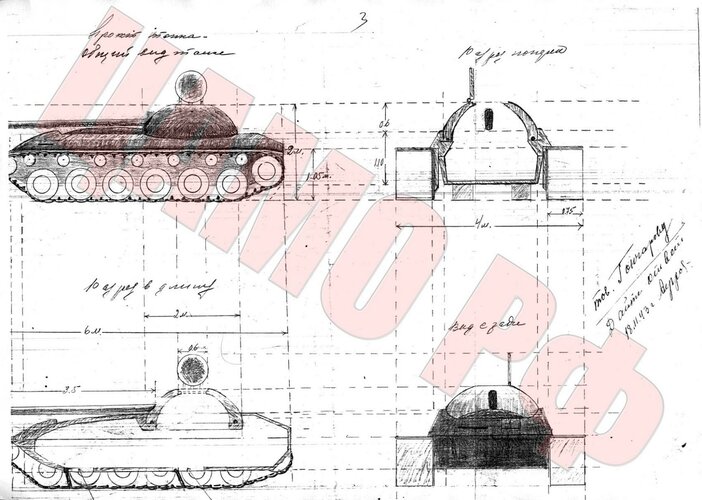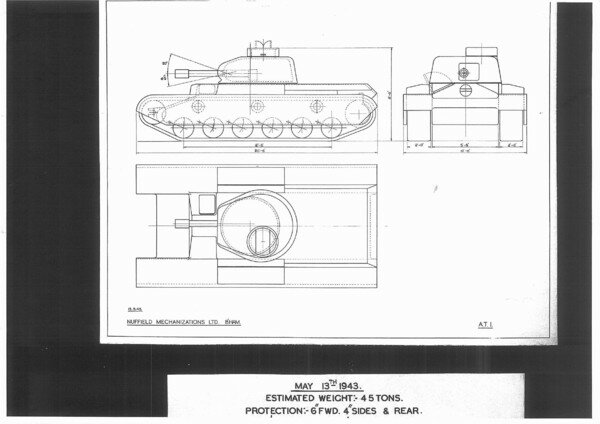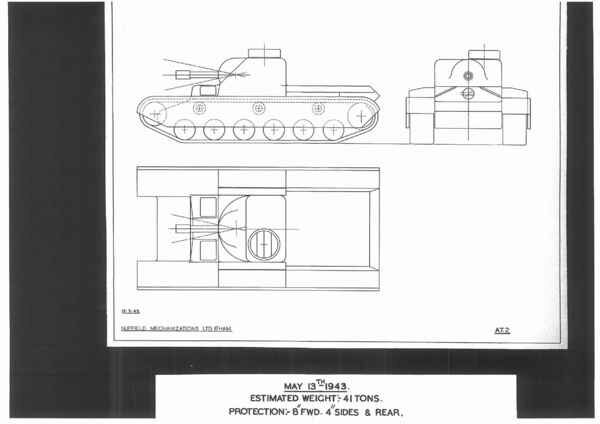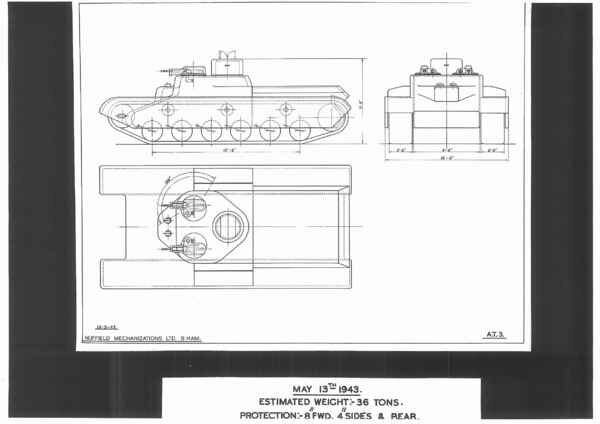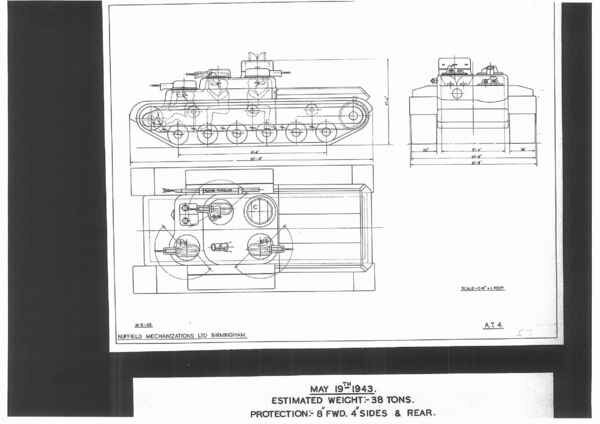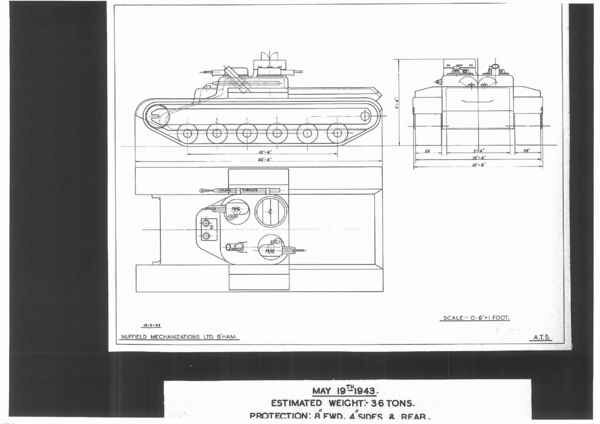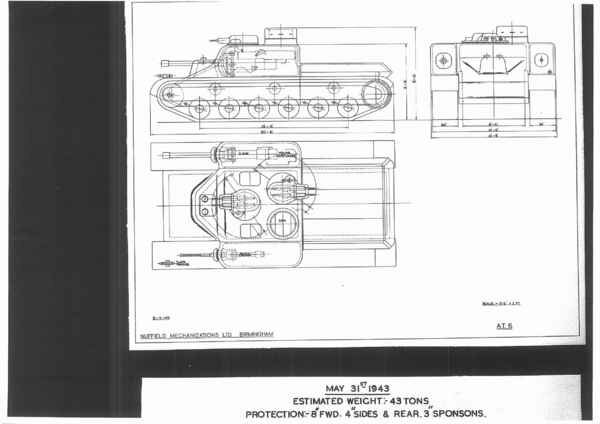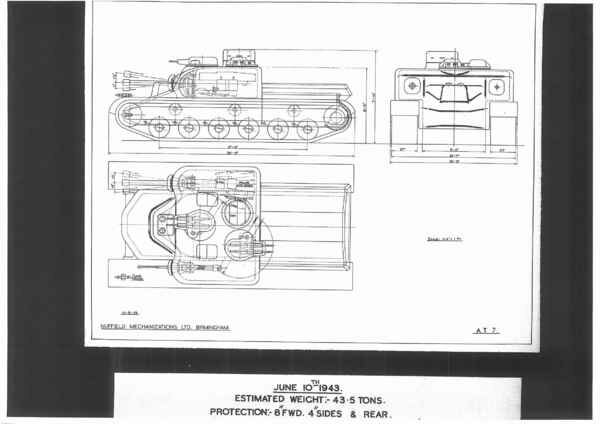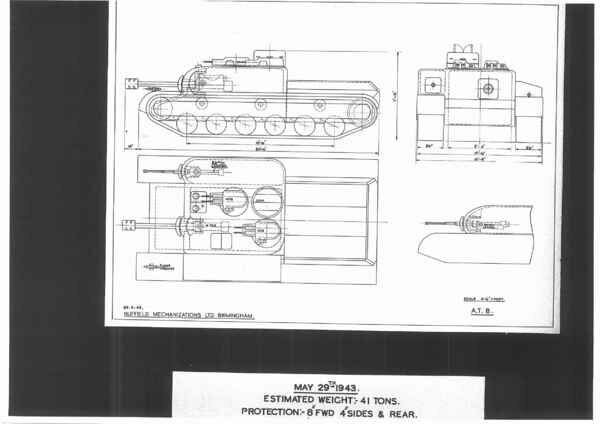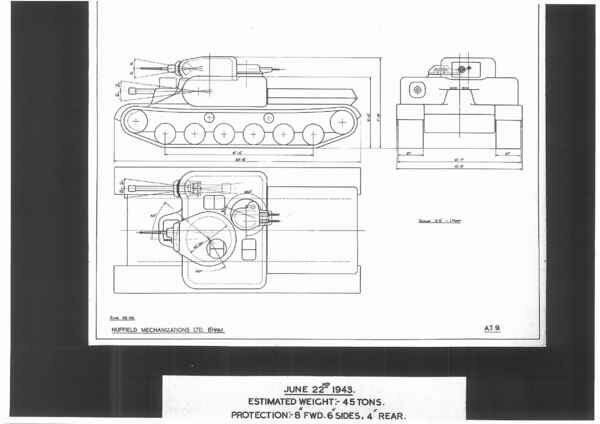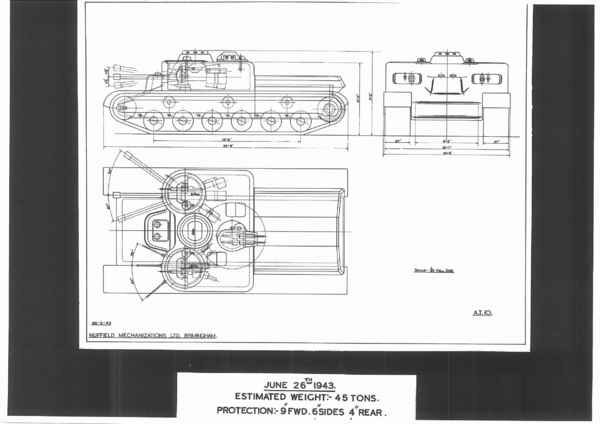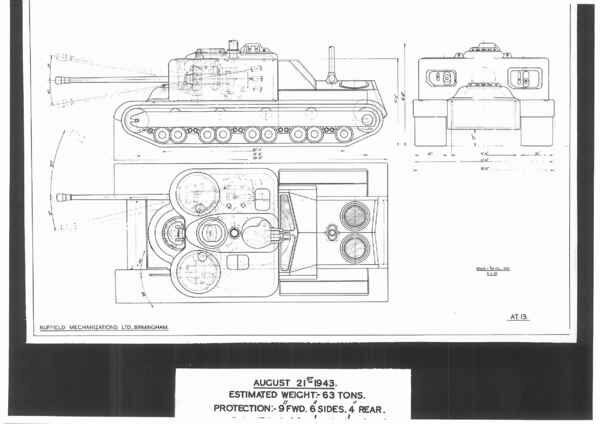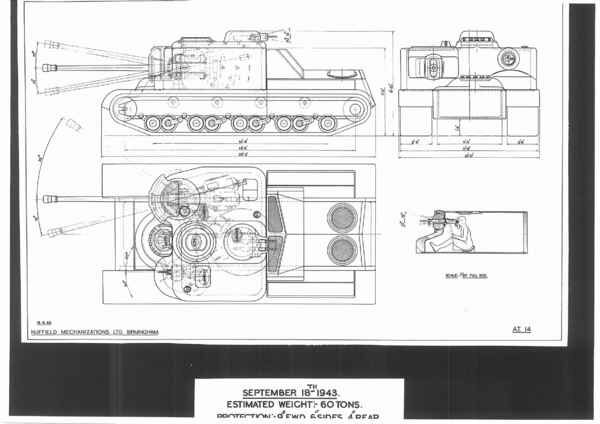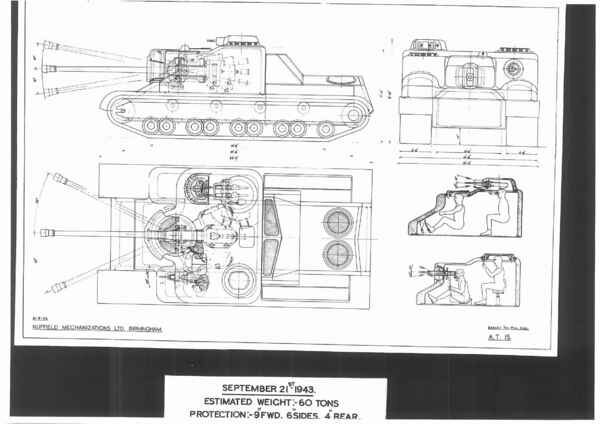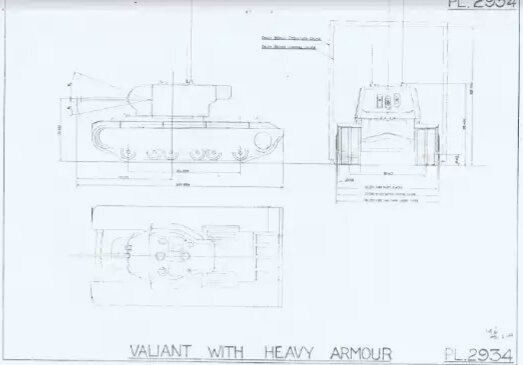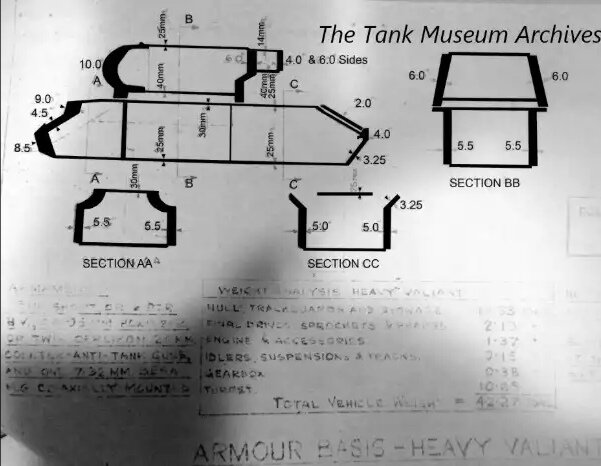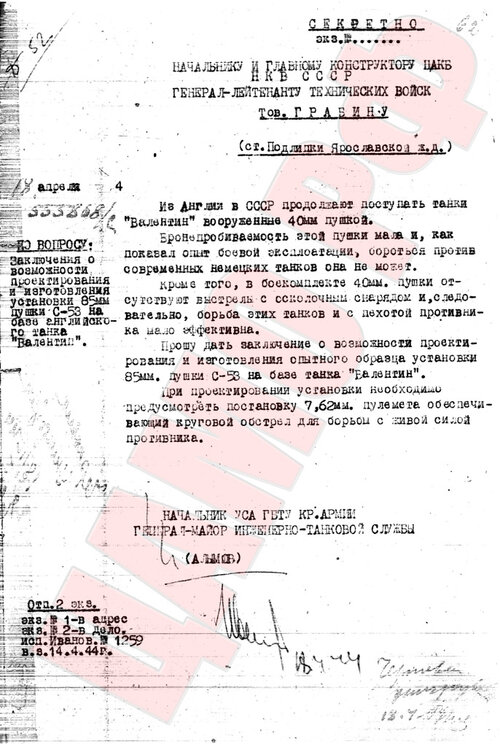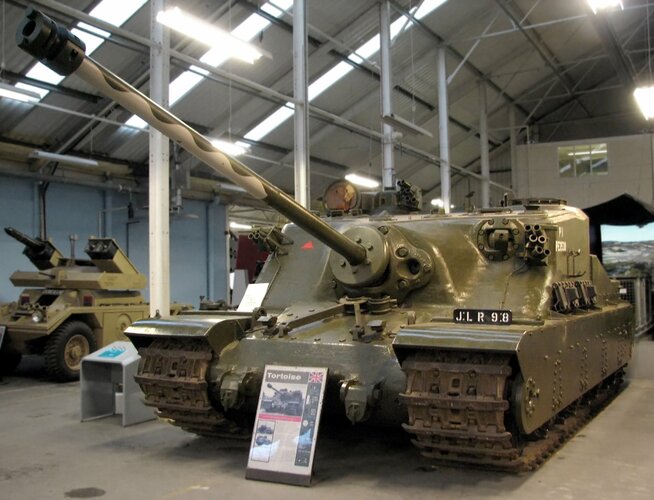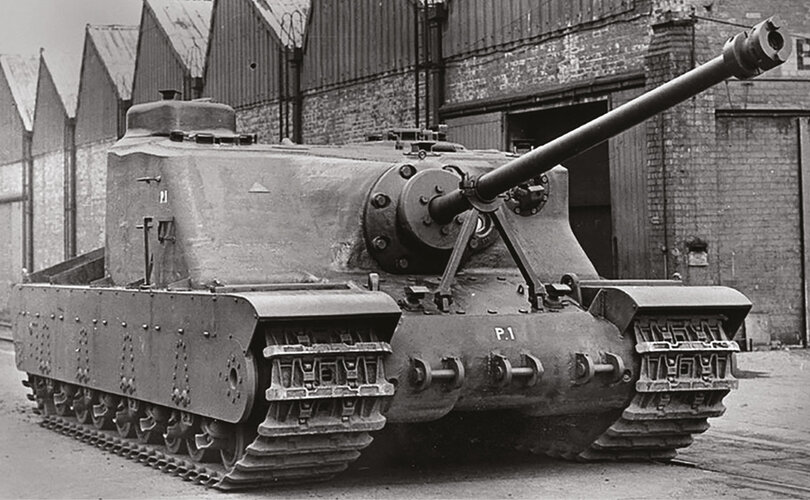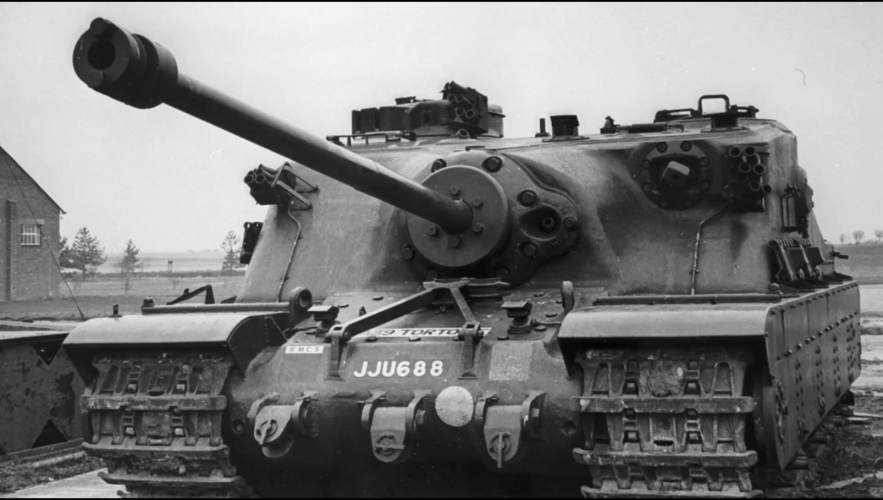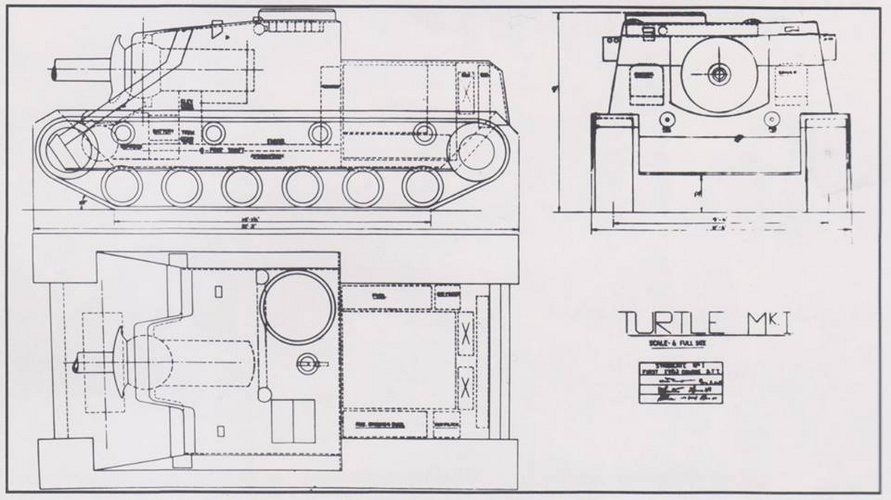- Joined
- 18 March 2008
- Messages
- 3,529
- Reaction score
- 880
During WWII the British Army came up with the idea of an Assault Tank to defeat German emplaced anti tank guns (PAK) via artillery suppression. Trialled with Churchills the idea was that the assault tank unit would advance into a friendly artillery bombardment that would suppress the anti tank gun crews. While the anti tank crews were in their bunkers and trenches the assault tanks would drive around inside the bombardment and destroy all the unmanned anti tank guns. The trials were considered a success with the tanks being able to easily identify targets within the bombardment. The only problem was minor damage caused by the artillery splinters caused a few mobility kills (damaging tracks) and air bursts couldn’t be used due to the weakness of the engine bay roof armour. So new designs were prepared for assault tanks that were immune to low and medium intensity bombardments.
To provide the assault tank capability English Electric were contracted to develop the A33 “Excelsior” and in the US American Locomotive the T14 (to a British specification). Prototypes of both tanks were built but neither entered mass production. Further developments focused on a light assault tank (A38 Valiant) and heavy tanks with massive gun armament.
To provide the assault tank capability English Electric were contracted to develop the A33 “Excelsior” and in the US American Locomotive the T14 (to a British specification). Prototypes of both tanks were built but neither entered mass production. Further developments focused on a light assault tank (A38 Valiant) and heavy tanks with massive gun armament.

